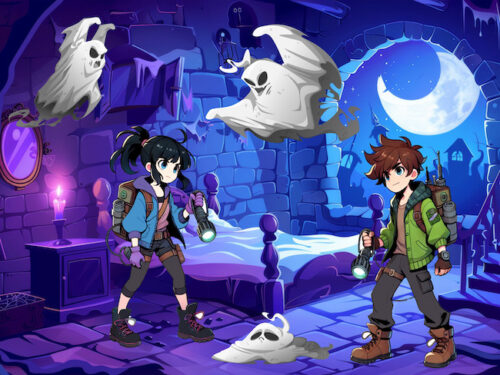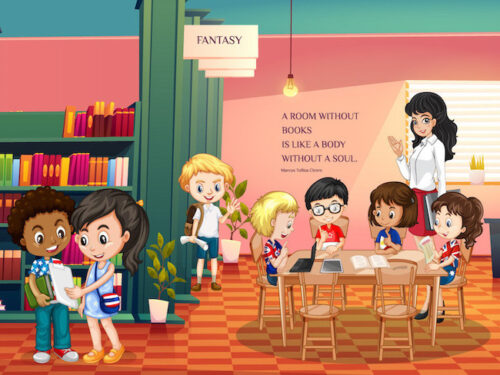How to create your own escape room game at home?
Discover our ultimate guide to create your own escape room game at home.
Escape rooms are very popular activities for children and can be organized under any circumstances, whether it’s to play with the family, for a birthday party or on a rainy weekend!
So how do you set up and create your own escape room game to play at home?
You will find all the tips and step by step steps to build your own escape room!
You should know that creating your own escape room game is not easy. Especially if it’s your first experience, the task won’t be so simple but it’s really very interesting. Here we go !
What is an escape game?
Originally, you should know that everything happened on video games. Indeed, the player had to manage to get out of a room in which he was locked up, so in a virtual way. Today, escape games have invaded our real world and many escape rooms have been created and continue to develop under the popularity of the public of all ages. So why such a craze? Indeed, escape games allow us to escape from our everyday life, to take up challenges in an unusual setting, to live an adventure that takes us out of our routine.
Many teachers in schools are taking advantage of this innovative game concept to teach their students in a different way, in the form of a game, in a spirit that is both fun and educational… And it works!
The principle of the game is to solve a mission or escape from a place in a given time, often 1 hour, by working as a team.
Choose the theme to create an amazing escape room
Before you start developing your escape room game, start by thinking and reflecting on your theme. When the theme is chosen, then the real design moment will begin.
Choosing the theme is the simplest and most fun part of creating your escape room.
You will need to figure out what kind of adventure you want to go on.
You can be inspired by your child’s interests, movie releases at the cinema, events of the year (Easter, Halloween, Christmas…). All sources of inspiration are good. The creation of an escape room game knows no limits.
The story can be long or rather short… You choose what suits you best. The important thing is the content of your game, which will have to include many challenges, digs and puzzles in order to arouse the children’s interest.
Ideas for themes to create an escape room
- Classic Theme: Choose from common themes such as pirates, princesses, cowboys or knights. Classic themes are still a sure thing and decoration is often easier to find.
- Crazy theme: it’s time to dare! No limits! A crazy professor, zombies, a haunted mansion or secret agents… The escape game allows you to escape and get out of the ordinary so let your imagination run wild and dare unexpected themes!
- Realistic theme: you can draw inspiration from everyday life. The main theme of the moment is the Covid-19 (coronavirus disease) epidemic, so why not think about a current topic with the strain of the deadly virus to find in order to develop a vaccine…
In any case, get your story straight! It should be intriguing and make the child want to go on a mission. The more captivating the story is, the more children will buy into the game.
Set up the scenario
Once you’ve chosen your theme, you’ll have to set up the scenario, i.e. think about the “key event” that will trigger the game, the mission to be accomplished. Then write your starting and ending story.
Once you know where you start and where you want to go, the game’s plot will take shape more naturally and quickly. Don’t make the mistake of starting out looking for challenges and puzzles right from the start. If they don’t fit your theme and the logic of your story, you will have to start all over again and it will be a big waste of time.
For example, you must succeed in retrieving confidential documents from a secret army base.
Write down an original idea, think about the beginning and the end, find the plot of the game that will allow you to move from one step to the next with the subsequent implementation of puzzles and challenges.
Elaborate the steps of your escape game
It is now time to move on to the concrete elaboration of the different challenges and challenges that will take you forward throughout the game.
It all starts a bit messy and that’s normal. You will think about characters or objects that will be part of your adventure.
For example, in our spy and secret agent case, you will make a list of characters like secret agents, soldiers and objects like keys (indispensable), secret documents, a magnifying glass, binoculars, a safe… Your list with the different elements that will be part of your game is ready.
So, as I like lists and as you have to do a lot to organize your game in a constructive way anyway, you’ll have to do a second one!
This time, you will write down ideas for games and challenges that you would like to implement and that can easily be adapted to your play space. During an escape room game, logic games or room search activities are an integral part of the activity.
Vary your puzzles: codes to decipher, hidden objects, people to find to get a clue, objects to manipulate…
Once this list of ideas is set up, you will have to do the work a little “headache” but super interesting to combine your objects / characters and challenges.
Place the 2 lists in front of you, and take a new blank sheet of paper. And yes again…
On it, assemble one of your elements or characters with an idea of games.
For example:
- A search to find a key.
- A secret code to find a password.
- A logic game to find a place.
Once objects and challenges are linked 2 to 2, start to put them in a logical order following the plot of your story, numbering them. The first challenge will be… The second challenge will be…
Once your games are in order, finish building your story. Indeed, between each puzzle resolution, you have to think of a small sentence to link them together and make sure that there is a logical thread. At the end of this step your escape game is almost finished.
This stage is the longest and most complex and sometimes you may feel like giving up along the way. But this is normal, your first escape game will not be perfect. But it will allow you to get used in order to create a second one, and over time it will become a real natural mechanism for you.
Once everything is in order, take a sheet of paper and rewrite the whole thing from beginning to end with your title theme, your starting story including the event that triggered the mission, then your various puzzle and digging games with the clue to find each time and put on your final story.
When the draft becomes reality
The draft of the game flow is ready. Now it has to be carried out in a concrete way.
The easiest way is to create an escape room to print.
To do this, use your computer to build your game.
Remember to use one sheet per step: one sheet with the starting story, one sheet per puzzle and one sheet with the ending story.
The advantage is that when creating the different puzzles, you can easily change or exchange the place of each one in order to place them as much as possible in a logical, coherent and comprehensible sequence for everyone.
If you have chosen a code, then you will have to create it. If you have chosen for the next step a search, then plan a card asking you to search the room for a key that you have hidden.
Little by little your escape game will take shape, will become a real game with a series of logical puzzles. This phase can take time.
Don’t hesitate to collect images that could help you on google and take a look at Pinterest to find good ideas for games, puzzles, challenges and fun and varied puzzles to propose to children.
The final test
Before implementing your escape room with children, test it! Indeed, it is by making it for real, yourself or with friends that you will find the flaws that may have crept into your game.
The story is not logical at a given moment, a puzzle is not clear, the sequence of events is badly ordered and confusing? It’s time to make the final adjustments. To realize this, you must test your game before you put it in place for your audience. If you are lucky enough to have people around to test your game, then you can observe the process and note down all the small details and adjustments on a sheet of paper so that you can modify them.
Preparation tips to create an home escape room
At the beginning everything will be a little confusing, but this is completely normal. Creating your own escape room game requires a lot of patience, time and reflection. It is not done in a few minutes.
- When you run out of ideas, then take a break! An escape game matures and takes several days to think about. Clear your mind, move on and come back to your sheet when you have clearer ideas. You’ll see that you’ll take a fresh look at how your game is developing.
- Another idea that can be very helpful is to brainstorm. Basically, don’t stand alone with your creation (unless you’re super comfortable and full of good ideas). Don’t hesitate to ask for advice and ideas from your family, your colleagues, your friends. Get inspiration from the movies you’ve seen, and even better, from the escape rooms and the type of games offered if you’ve already had the opportunity to try them out in real life.
- Play on emotions! Depending on your theme, try to make children laugh, scare, amaze or even disgust them. There may be a game where the child has to put his hand in a box to get the key out. But beware, the box contains strange, slimy or other materials and will frighten the child but still be very intriguing!
- Think of the variety: you must avoid boredom and not fall into games that are always a little bit identical. Moreover, an escape game is a team game and there is something for everyone. Some children will be more into thinking while others will be more into manipulation. Vary the logic games and therefore more static with research games and therefore more in movement.
- The number of participants: it is necessary to ensure that each child can find his or her place in the game and for this reason it is better to avoid too many children, especially if your mechanics are not yet well developed.
- Adapt the puzzles and games to the age of the participants: it is necessary that the different activities proposed are neither too simple nor too complicated. It’s all about dosage and balance, so adapt the different games to the children’s abilities.
- Surprise your guests! Indeed, depending on your location, try to always remain moose. Unsuspected hiding places, a frightening scenario, original and varied puzzles… Your escape game will be all the more successful.
- To make your game even more real, don’t hesitate to decorate the room, to put soft lights according to the theme, to use background music and to prepare accessories that will allow everyone to feel really absorbed by the game.
- Provide a short list of additional clues in case participants get stuck. Just think of small cards for each stage of the game with an additional clue. The goal, of course, is for the children to complete their mission in the time allotted and not to get stuck in the game.
Creating an escape room game requires a lot of time, patience and ideas. It may seem a bit overwhelming from time to time (and it is) but it’s so intriguing and exciting at the same time that you’ll find it a real pleasure to design it.
Of course, not everyone has the time to make a complete escape game from A to Z or simply doesn’t feel like it. That’s why you can also opt for our “turnkey” escape games available in our website and adapted to the different age groups of your children, but also our treasure hunts and detective mysteries for kids.











